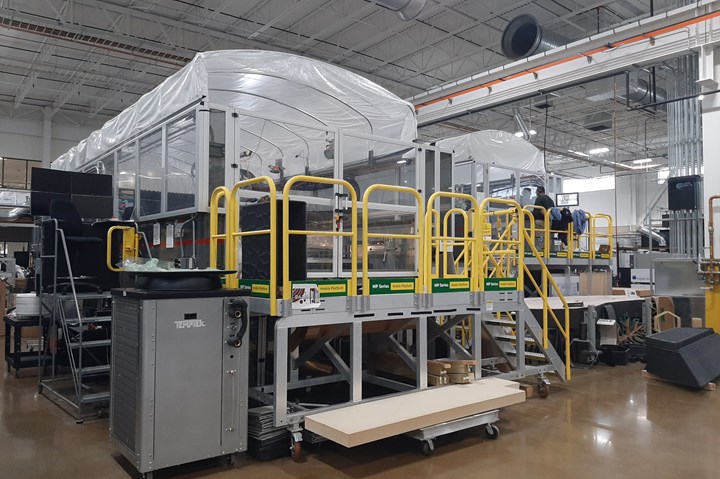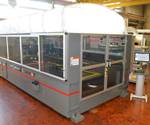Cincinnati BAAM Technology Demonstrates 3D Printing with Recycled Materials
The demonstration successfully proved that large-scale multi-material printing can be done effectively and economically with recycled composite materials.

BAAM platform.
The focus on sustainability has hit every area of the supply chain—including 3D printing. Build-to-order machine tool manufacturer Cincinnati Inc. (CI) recently announced that it has used its Big Area Additive Manufacturing (BAAM) machine to demonstrate that recycled materials can be used for 3D printing by producing one of the largest monolithic multi-material objects to date. The demonstration successfully proved that large-scale multi-material printing can be done effectively and economically with recycled composite materials.
The large-scale multi-material print was achieved by making modifications to the BAAM, including a new extruder design that accommodates a dual-feed system.
For the past several years, CI has collaborated with the U.S. Department of Energy’s Oak Ridge National Laboratory to continuously improve and develop the BAAM. Initial research focused on large-scale printing of single-material systems, typically short-fiber-reinforced polymers.
“The objective of this particular study was to demonstrate printing of a multi-material composites tool including transitions, exceeding 10 feet in length, containing recycled material and printed without manual intervention,” said Alex Riestenberg, CI’s additive manufacturing product manager.

The two materials used in the build were a blend containing 100% recycled CF/ABS and standard CF/ABS and ABS Syntactic foam.
The part selected for this demonstration was a single facet of a precast concrete tool used in the production of commercial window panels for a high-rise development in New York City. The mold weighed approximately 400 pounds, with a length of 10 ft, 10 in. Print time was approximately seven hours.
“Studies have shown that by using multiple materials within a structure, new mechanical responses and multi-functionality can be achieved—such as light-weight structures with tailored mechanical properties, soft and rigid segments within a part and impact resistant structures,” said ORNL materials scientist Vidya Kishore.
The company says that besides the sustainable benefits of using recycled materials, the advantages of multi-material extrusion include incorporating conductive circuit printing for smart structures, light-weight core structures, lower costs for tooling, easier removal of support material, localized reinforcement of specific areas, the capability to use different materials in different features on the component, and even changing the color of the part.
The key to the accomplishment of the goals outlined above was the BAAM Multi-Material system, developed in conjunction with ORNL. The large dual-material thermoplastic extrusion system allows the user to print with multiple different materials within a single build using just one extruder.
“The source of material fed into the extruder is switched on the fly at specific times during a print by sliding two material ports back and forth over the infeed to the extruder,” Riestenberg said. “The system also includes a material blender outside the frame of the machine that can blend specific amounts of different materials and fillers on the fly for specific custom material grades.”
Riestenberg explained that the combination of the material feed switching mechanism and the material blender gives users the ability to print with several different types of materials and material combinations within a single build, instead of two.
Related Content
-
Medical Manufacturer Innovates with Additive Manufacturing and Extrusion Technology Hubs
Spectrum Plastics Group offers customers two technology hubs — one for extrusion, the other for additive manufacturing — to help bring ground-breaking products to market faster.
-
3D Printing of Injection Molds Flows in a New Direction
Hybrids of additive manufacturing and CNC machining can shorten tooling turnaround times.
-
Freeform Injection Molding Eases the Path to Medical Device Product Testing
A development and manufacturing service provider is using dissolvable molds to build injection molded silicone prototypes.















